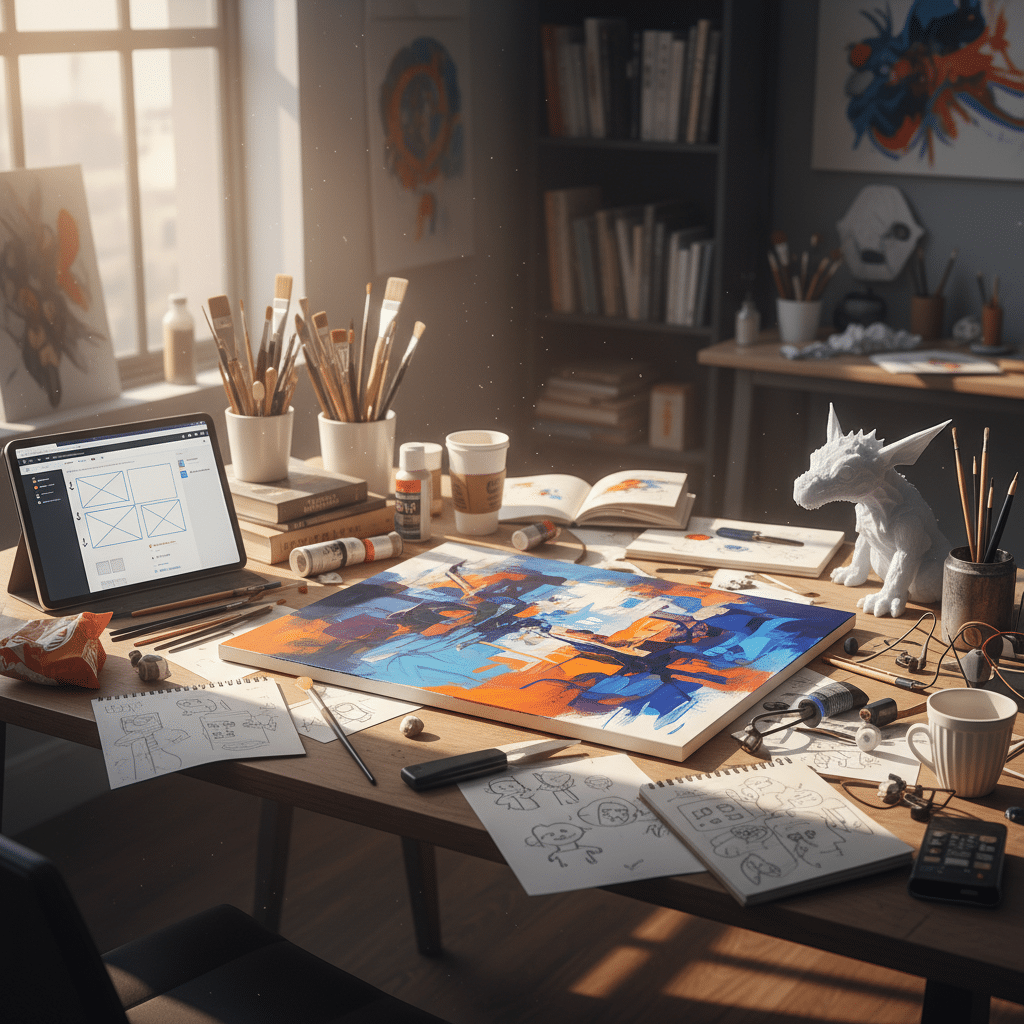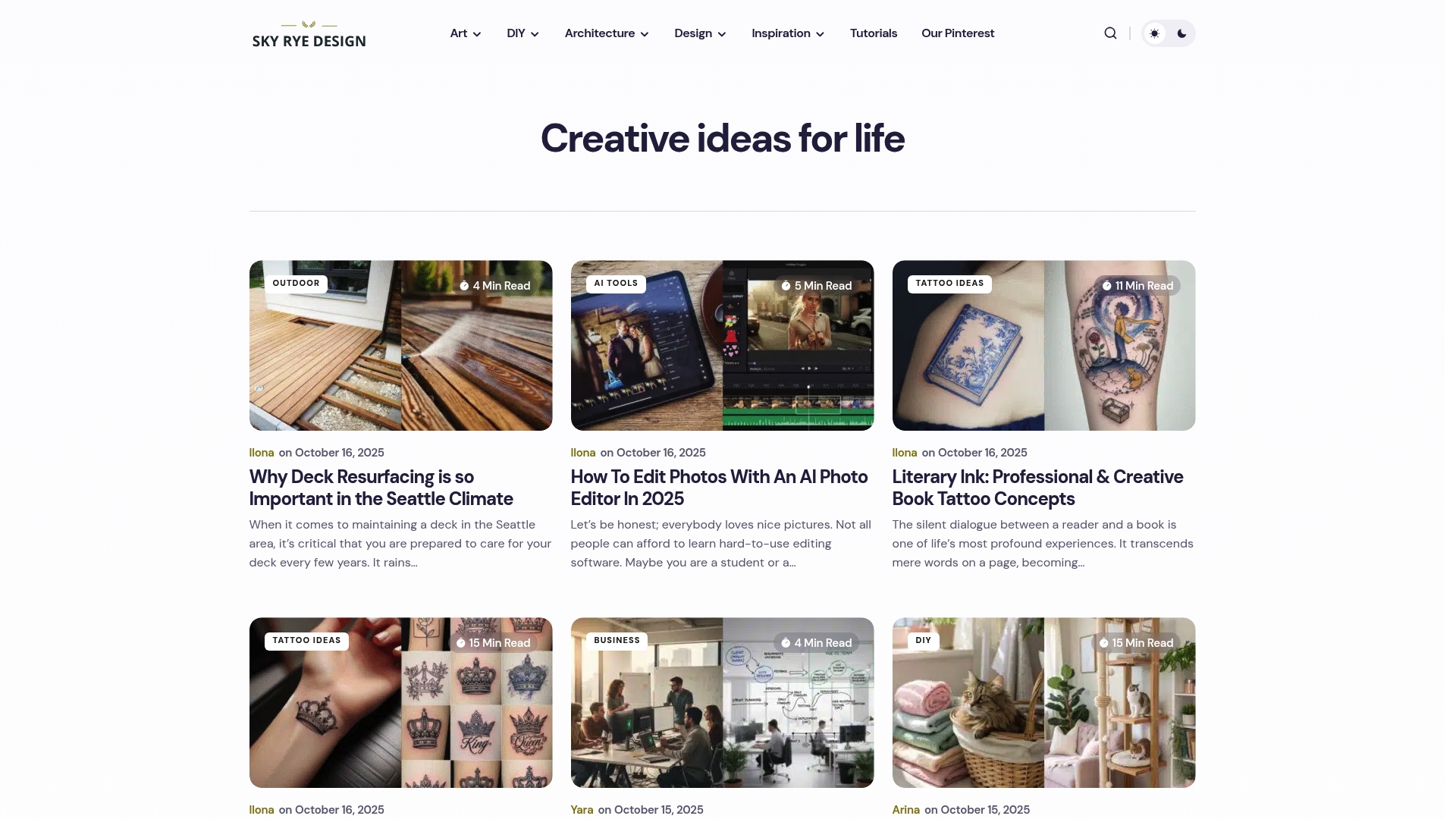Did you know that almost 80 percent of people believe creativity is key to success, yet few understand how it really works? The creative process shapes everything from art and design to science and business. Grasping its true nature opens new doors for problem-solving and personal growth, turning imagination into results that can surprise even the creator. Discover how moving through each stage brings ideas to life in ways both unexpected and powerful.

Table of Contents
- Defining The Creative Process In Practice
- Major Stages Of The Creative Journey
- Types Of Creative Processes Across Fields
- Benefits Of Embracing A Creative Process
- Common Pitfalls And How To Avoid Them
Key Takeaways
| Point | Details |
|---|---|
| Understanding the Creative Process | Creativity is a non-linear journey consisting of distinct stages that involve preparation, incubation, illumination, evaluation, and verification. Embrace this structure to enhance your creative output. |
| Divergent Thinking | To foster innovation, employ divergent thinking which encourages generating multiple ideas simultaneously instead of seeking a single correct answer. |
| Embracing Challenges | View creative blocks as opportunities for growth; change your environment and maintain curiosity to overcome them. |
| Benefits Beyond Ideas | Engaging in creative processes enhances problem-solving skills and emotional intelligence, ultimately leading to personal transformation and societal contributions. |
Defining The Creative Process In Practice
The creative process is a dynamic journey of transforming imagination into tangible reality. According to Wikipedia’s research on creative work, this process involves manifesting creative effort through various mediums like artwork, writing, dance, and musical composition. It’s not just about producing something beautiful—it’s about navigating the complex landscape of human innovation.
Ideation sits at the heart of this process. As defined by creative research, ideation is the intricate mechanism of generating, developing, and communicating new ideas from initial spark to full actualization. Think of it like a sophisticated mental ecosystem where thoughts interact, combine, and evolve into something entirely original.
Understanding the creative process means recognizing its non-linear nature. It’s rarely a straightforward path and instead resembles a winding road with multiple entry and exit points. Creators often experience:
- Moments of sudden inspiration
- Periods of intense concentration
- Phases of experimentation and iteration
- Moments of doubt and breakthrough
Successful creators embrace these fluctuations, viewing them not as obstacles but as essential components of their unique creative journey. The magic happens when you learn to trust the process, stay curious, and remain open to unexpected possibilities.
Major Stages Of The Creative Journey
Creativity isn’t a random explosion of ideas—it’s a structured journey with distinct stages. According to MasterClass research, the creative process unfolds through five critical stages that transform raw potential into remarkable outcomes. Understanding these stages provides a roadmap for anyone looking to unlock their creative potential.
Here’s a summary of the five key stages of the creative process:
| Stage | Main Activities | Purpose |
|---|---|---|
| Preparation | Research Gather information | Build foundation |
| Incubation | Subconscious processing Reflection | Connect ideas Form insights |
| Illumination | Spontaneous ideas Eureka moments | Spark creativity |
| Evaluation | Review Critique concepts | Test feasibility |
| Verification | Implement Refine solutions | Realize outcome |
The first two stages—preparation and incubation—lay the groundwork for breakthrough moments. During preparation, creators gather information, research deeply, and set the stage for innovation. As WeWork’s creative process insights suggest, incubation is where your subconscious mind works magic, connecting seemingly unrelated concepts while you’re seemingly doing nothing.
The next phases are where the magic truly happens:
- Illumination: The electrifying moment when ideas suddenly crystallize
- Evaluation: Critically assessing the potential and feasibility of your concept
- Verification: Refining and implementing the creative solution
Successful creators don’t just understand these stages—they learn to dance between them. Some days you’ll be gathering research, other days you’ll be letting ideas simmer subconsciously. The key is patience, persistence, and remaining open to unexpected connections that can transform a good idea into a groundbreaking innovation.

Types Of Creative Processes Across Fields
Creative processes are not one-size-fits-all. Different fields and disciplines employ unique approaches to generating innovative ideas. Wikipedia’s research on divergent thinking reveals that creative problem-solving often involves exploring multiple possible solutions simultaneously, challenging traditional linear thinking.
Divergent thinking stands out as a powerful creative technique used across various domains. Unlike convergent thinking, which focuses on finding a single correct solution, divergent thinking encourages mental exploration, generating numerous unique ideas. Artists, scientists, designers, and entrepreneurs all leverage this approach to breakthrough innovation.

Another fascinating creative process is creative visualization, which involves:
- Generating mental imagery from memory or imagination
- Sustaining and inspecting complex mental scenarios
- Transforming abstract concepts into tangible mental representations
- Elaborating on initial ideas to explore multiple potential outcomes
Each field brings its own flavor to the creative process.
A graphic designer might use visual brainstorming, a writer might engage in free writing, while a scientist might employ systematic hypothesis testing. The common thread? Embracing uncertainty, remaining open to unexpected connections, and trusting the journey of creative exploration.
Benefits Of Embracing A Creative Process

Embracing a creative process is more than just generating ideas—it’s a transformative journey of personal and collective growth. According to research on transformative arts, artistic activities have the profound power to precipitate constructive change, challenging existing beliefs and reshaping our perceptions of the world around us.
The social impact of creativity extends far beyond individual expression. Honing theory research suggests that creative processes fuel cultural evolution through collaborative exchanges, enabling minds to self-organize and develop increasingly nuanced worldviews. This means every creative act has the potential to contribute to broader societal understanding and progress.
The personal benefits of embracing a creative process are equally compelling:
- Enhanced problem-solving skills
- Increased mental flexibility
- Improved emotional intelligence
- Greater self-awareness
- Reduced stress through expressive outlets
- Boosted confidence in personal capabilities
Ultimately, creativity is not a luxury—it’s a fundamental human capacity for growth, connection, and understanding. By intentionally cultivating creative practices, we open ourselves to endless possibilities of personal transformation and meaningful contribution to our communities.
Common Pitfalls And How To Avoid Them
The creative journey is rarely smooth, and understanding potential obstacles can transform challenges into opportunities. Research on serendipity in creative processes reveals that creativity involves complex phases of perception, attention, and valuation—each presenting unique potential for derailment.
Creative blocks are the most common challenge creators face. These frustrating moments occur when inspiration seems to vanish, leaving you staring at a blank canvas or empty page. Cultural probe techniques suggest that deliberately changing your environment, gathering inspirational data, and approaching problems from unexpected angles can help break through these mental barriers.
Key pitfalls to watch out for include:
- Perfectionism that paralyzes creative action
- Fear of judgment or failure
- Rigid thinking and resistance to new perspectives
- Overwhelming yourself with too many simultaneous projects
- Neglecting regular creative practice
- Comparing your process to others
Successful creators don’t avoid pitfalls—they learn to navigate them with curiosity and resilience. Embrace imperfection, view challenges as learning opportunities, and remember that every creative journey includes unexpected twists. The most important skill is maintaining momentum, even when progress feels uncertain.
Unlock Your Full Creative Potential with Skyrye Design
The journey through the creative process can often feel overwhelming with its twists of doubt, bursts of inspiration, and the challenge of turning ideas into reality. If you have ever struggled with creative blocks or felt stuck in the stages of ideation and evaluation, you are not alone. This expert guide highlights how embracing each phase—preparation, incubation, illumination, evaluation, and verification—is key to breakthrough innovation. But knowing the process is just the start.

Transform your creative challenges into opportunities by exploring fresh inspiration, practical guidance, and actionable ideas at Skyrye Design. Our carefully curated articles on design, art, and lifestyle provide the support you need to navigate your creative journey with confidence. Start building your personal creative process today and see how small changes can spark big results. Visit Skyrye Design now and take the next step toward creative breakthroughs that truly matter.
Frequently Asked Questions
What are the main stages of the creative process?
The creative process consists of five critical stages: Preparation, Incubation, Illumination, Evaluation, and Verification. Each stage plays a crucial role in transforming ideas into tangible outcomes, facilitating a structured journey from initial inspiration to final implementation.
How can I overcome creative blocks during the creative process?
To overcome creative blocks, consider changing your environment, gathering inspirational data, and approaching problems from unexpected angles. Additionally, embracing imperfection and viewing challenges as learning opportunities can help maintain momentum in your creative journey.
What is the significance of ideation in the creative process?
Ideation is at the heart of the creative process and involves generating, developing, and communicating new ideas. It serves as a complex mental ecosystem where thoughts interact and evolve, ultimately leading to innovative solutions and breakthroughs.
Why is understanding the creative process important for personal growth?
Understanding the creative process is essential for personal growth as it enhances problem-solving skills, increases mental flexibility, improves emotional intelligence, and boosts self-awareness. Embracing creativity can lead to reduced stress and greater confidence in one’s abilities.
Recommended
- 6shares
- Facebook0
- Pinterest6
- Twitter0


